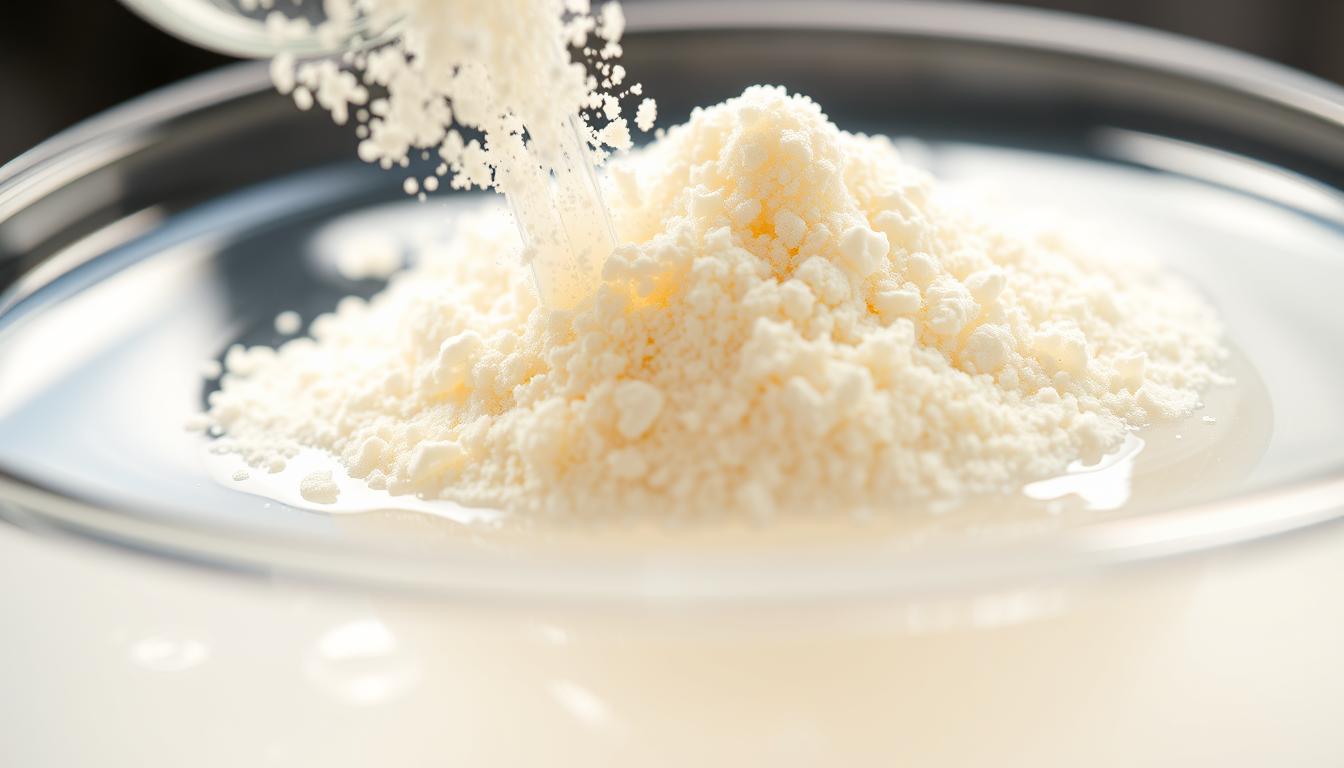
The Complete Guide to Gum Tragacanth: Properties, Applications, and Benefits
SUBSCRIBE TO OUR BLOG
Promotions, new products, and recipes.
The Complete Guide to Gum Tragacanth: Properties, Applications, and Benefits
Gum Tragacanth is a natural plant exudate derived from several species of Middle Eastern legumes of the genus Astragalus. This versatile natural gum has been used for centuries across various industries due to its exceptional emulsifying, stabilizing, and thickening properties. Whether you're a food technologist looking for a natural additive, a cosmetic formulator seeking stable emulsions, or a DIY enthusiast exploring natural ingredients, this comprehensive guide will provide everything you need to know about this remarkable natural substance.
What is Gum Tragacanth?
Gum Tragacanth is a viscous, odorless, tasteless, water-soluble mixture of polysaccharides obtained from the dried sap of several Astragalus species, including Astragalus gummifer, A. adscendens, A. brachycalyx, and A. tragacantha. These plants are sometimes collectively known as "goat's thorn" or "locoweed." The name "tragacanth" derives from Greek words tragos (meaning "goat") and akantha (meaning "thorn"), reflecting the thorny nature of the source plants.
In its natural state, Gum Tragacanth appears as twisted ribbons or flakes that can be ground into a fine powder. The color ranges from white to pale yellow or pinkish, depending on the source species and processing methods. Iran is the world's largest producer and exporter of this natural gum, with the highest quality varieties coming from the mountainous regions of the country.
Structurally, Gum Tragacanth consists of two main fractions: tragacanthin (the water-soluble component) and bassorin (the water-insoluble but swellable component). This unique composition gives the gum its exceptional properties as both a thickener and stabilizer in various applications.
How Gum Tragacanth is Produced

The production of Gum Tragacanth follows a traditional process that has remained largely unchanged for centuries:
- The process begins with identifying mature Astragalus plants, typically 4-5 years old, growing in arid, mountainous regions.
- During summer months (June to September), skilled harvesters make careful incisions in the stems and branches of the plants.
- The plant responds to these wounds by exuding a protective sap, which is the raw Gum Tragacanth.
- This exudate naturally dries in the air over 2-3 days, forming ribbon-like or flaky structures.
- Harvesters then carefully collect these dried gum pieces by hand.
- The collected gum undergoes sorting by quality, color, and form (ribbon or flake).
- After sorting, the gum is cleaned to remove any plant debris or impurities.
- Finally, the gum is either kept in its natural form or ground into a fine powder for commercial distribution.
The quality of Gum Tragacanth varies based on several factors, including the specific Astragalus species, growing conditions, harvesting techniques, and processing methods. Iranian tragacanth ribbons are typically sorted into five grades, while flakes are provided in seven different grades, with the ribbon form generally considered superior in quality.
Key Properties of Gum Tragacanth

Gum Tragacanth possesses a unique set of physical and chemical properties that make it valuable across multiple industries:
Physical Properties
- Appears as white to pale yellow ribbons, flakes, or powder
- Odorless and nearly tasteless
- Forms highly viscous colloidal solutions when hydrated
- Exhibits pseudoplastic (shear-thinning) behavior
- Excellent stability across a wide pH range (2-10)
- Exceptional heat stability compared to other natural gums
- Low water solubility but high water absorption capacity
- Forms gels through water absorption rather than true dissolution
Chemical Properties
- Complex heterogeneous polysaccharide with molecular weight up to 850 kDa
- Composed of two main fractions: tragacanthin (30-40%) and bassorin (60-70%)
- Contains D-galacturonic acid, D-xylose, L-fucose, D-galactose, and L-arabinose
- Slightly acidic nature with carboxylic groups in its structure
- Highest viscosity between pH 5-6
- Compatible with most other hydrocolloids
- Resistant to enzymatic degradation
- Excellent emulsifying capabilities due to its complex structure
Need More Technical Information?
Download our comprehensive technical data sheet on Gum Tragacanth properties for detailed specifications and formulation guidelines.
Download Technical Data SheetApplications of Gum Tragacanth
The versatility of Gum Tragacanth makes it valuable across numerous industries. Here are the primary applications where this natural gum excels:

Food Industry
- Stabilizer and thickener in ice creams and frozen desserts
- Emulsifier in salad dressings, sauces, and condiments
- Texture enhancer in gluten-free baking
- Binding agent in confectionery products
- Suspending agent in beverages and liquid food products
- Shelf-life extender in various processed foods

Pharmaceutical Applications
- Binding agent in tablet formulations
- Suspending agent in liquid medications
- Emulsifier in creams and ointments
- Demulcent in cough syrups and lozenges
- Controlled-release matrix in drug delivery systems
- Stabilizer in various pharmaceutical preparations

Cosmetics & Personal Care
- Stabilizer in creams, lotions, and emulsions
- Thickening agent in hair care products
- Film-forming agent in mascaras and eyeliners
- Binding agent in pressed powders
- Emulsion stabilizer in foundations and BB creams
- Natural alternative to synthetic thickeners
Additional Applications
Traditional Crafts
- Binder in artist's pastels
- Adhesive in bookbinding and paper conservation
- Size in traditional paper marbling
- Binder in floral sugarcraft for cake decorations
- Adhesive in cigar-rolling process
Industrial Uses
- Textile printing and finishing
- Leather edge slicking and burnishing
- Ceramic glazes and pottery
- Incense making as a binder
- Green synthesis of nanoparticles
Benefits of Using Gum Tragacanth

Advantages of Gum Tragacanth
- Natural Origin: Derived from plant sources without chemical processing
- Exceptional Stability: Maintains properties across wide pH and temperature ranges
- Vegan-Friendly: Plant-based alternative to animal-derived stabilizers
- Hypoallergenic: Low allergenicity compared to some other gums
- Biodegradable: Environmentally friendly and sustainable
- Long Shelf Life: Provides extended stability to formulations
- Superior Emulsifying Properties: Creates stable emulsions at low concentrations
- Synergistic Effects: Works well in combination with other hydrocolloids
Limitations to Consider
- Cost: Generally more expensive than some synthetic alternatives
- Supply Variability: Seasonal and regional factors can affect availability
- Slow Hydration: Takes longer to fully hydrate compared to some gums
- Quality Variations: Properties can vary based on source and processing
- Limited Solubility: Not completely soluble in water
- Processing Requirements: May need special dispersion techniques
Did You Know? Gum Tragacanth has been used in traditional medicine for centuries to treat coughs, diarrhea, and as a topical treatment for burns. While modern medical applications focus on its functional properties rather than therapeutic effects, this historical usage highlights its long safety record.
Gum Tragacanth vs. Other Natural Gums
Understanding how Gum Tragacanth compares to other natural gums can help you determine the best option for your specific application:
| Property | Gum Tragacanth | Guar Gum | Xanthan Gum | Gum Arabic |
| Source | Astragalus plant exudate | Cyamopsis tetragonoloba seeds | Bacterial fermentation | Acacia tree exudate |
| Viscosity | Very high | High | Medium-high | Low |
| pH Stability | Excellent (pH 2-10) | Moderate (pH 4-10) | Excellent (pH 2-12) | Good (pH 4-10) |
| Heat Stability | Excellent | Good | Excellent | Good |
| Emulsifying Ability | Excellent | Poor | Good | Excellent |
| Typical Usage Level | 0.2-1.0% | 0.5-2.0% | 0.1-0.5% | 1.0-5.0% |
| Relative Cost | High | Low | Medium | Medium |
| Texture in Solution | Smooth, creamy | Slimy | Pseudoplastic | Thin, fluid |
Not Sure Which Gum Is Right for Your Application?
Our experts can help you determine the best natural gum for your specific needs. Contact us for personalized recommendations and samples.
Safety and Regulatory Status
Gum Tragacanth has a long history of safe use in food and pharmaceutical applications. Its regulatory status includes:
- FDA Status: Generally Recognized as Safe (GRAS) in the United States
- E Number: Designated as E413 in the European Union as an approved food additive
- JECFA: Evaluated by the Joint FAO/WHO Expert Committee on Food Additives with an "ADI not specified" status, indicating no safety concerns at current usage levels
- Kosher and Halal: Generally certified as both Kosher and Halal
Recommended Usage Levels
While Gum Tragacanth is considered safe, it's important to follow recommended usage levels for different applications:
| Application | Recommended Usage Level | Maximum Permitted Level (EU) |
| Dairy products | 0.1-0.5% | Quantum satis |
| Sauces and dressings | 0.2-1.0% | Quantum satis |
| Bakery products | 0.1-0.3% | Quantum satis |
| Confectionery | 0.2-0.5% | Quantum satis |
| Pharmaceutical tablets | 1-5% | N/A |
| Cosmetic products | 0.5-2.0% | N/A |
Allergen Considerations
Gum Tragacanth is generally considered hypoallergenic, with rare reports of allergic reactions. However, as with any ingredient, some individuals may experience sensitivity. It's not included in the major allergen lists of the EU or FDA. If you have known sensitivities to plant gums or legumes, consult with a healthcare professional before using products containing Gum Tragacanth.
Note on "Quantum satis": This term used in EU regulations means that no maximum numerical level is specified, but substances should be used according to good manufacturing practice, at a level not higher than necessary to achieve the intended purpose.
Buying Guide: Sourcing Quality Gum Tragacanth
Finding high-quality Gum Tragacanth requires understanding the market and knowing what to look for. Here are essential tips for sourcing this valuable ingredient:
Quality Indicators
- Form: Ribbon form is generally considered higher quality than flake form
- Color: Premium grades are pale white to slightly yellowish
- Clarity: When hydrated, should form a clear to slightly cloudy solution
- Viscosity: Higher grades produce more viscous solutions at the same concentration
- Impurities: Should be free from visible plant debris and foreign matter
- Microbial Content: Should meet food or pharmaceutical grade specifications
B2B Suppliers vs. Retail Options
B2B Suppliers
- Offer bulk quantities at better prices
- Provide detailed specifications and certificates of analysis
- Can often supply specific grades for particular applications
- May have minimum order quantities
- Usually require business credentials
- Often provide technical support and application advice
Retail Options
- Convenient for small quantities and testing
- More accessible for individual users and small businesses
- Often packaged in consumer-friendly formats
- Higher cost per unit weight
- May have less detailed specifications
- Available through specialty food stores and online marketplaces
Documentation to Request
- Certificate of Analysis (CoA)
- Food Grade or Pharmaceutical Grade certification
- Country of origin documentation
- Organic certification (if applicable)
- Kosher or Halal certification (if required)
- Non-GMO verification
- Allergen statement
Ready to Source Premium Gum Tragacanth?
Connect with verified suppliers offering high-quality Gum Tragacanth for your specific application needs.
Frequently Asked Questions About Gum Tragacanth
How should Gum Tragacanth be stored?
Gum Tragacanth should be stored in airtight containers in a cool, dry place away from direct sunlight. Properly stored, it has a shelf life of approximately 2-3 years. Once hydrated, preparations containing Gum Tragacanth should be refrigerated and used within 1-2 weeks to prevent microbial growth.
What is the best way to disperse Gum Tragacanth in water?
For optimal dispersion, first blend the dry Gum Tragacanth powder with other dry ingredients (like sugar) or with a small amount of oil or glycerin to prevent clumping. Then slowly add this mixture to cold water while stirring vigorously. Allow 24-48 hours for complete hydration at room temperature for best results. Using a high-shear mixer can accelerate the process.
Can Gum Tragacanth be substituted with other gums?
While other gums can sometimes be substituted, none perfectly replicate all properties of Gum Tragacanth. Xanthan gum is often used as a substitute at similar concentrations for its stability, but lacks the same emulsifying properties. A combination of xanthan gum and guar gum (2:1 ratio) can approximate some functions. For emulsification properties, gum arabic might be substituted at 2-3 times the concentration.
Is Gum Tragacanth vegan and gluten-free?
Yes, Gum Tragacanth is 100% plant-derived, making it suitable for vegan diets. It is naturally gluten-free and commonly used in gluten-free baking to improve texture and moisture retention. However, always verify with suppliers that there has been no cross-contamination during processing if you have severe gluten sensitivity or celiac disease.
What is the difference between food grade and technical grade Gum Tragacanth?
Food grade Gum Tragacanth meets strict purity and safety standards for human consumption, with controlled microbial levels and heavy metal content. It complies with food regulatory requirements. Technical grade is intended for non-food applications like crafts and industrial uses, may contain higher levels of impurities, and is typically less expensive. Always use food grade for any application involving human consumption.
Does Gum Tragacanth have any nutritional benefits?
Gum Tragacanth is primarily used as a functional ingredient rather than for nutritional purposes. However, as a soluble fiber, it may contribute to dietary fiber intake when consumed. Some studies suggest it may have prebiotic effects and could potentially help with cholesterol management and blood glucose regulation, though it's not typically used as a dietary supplement for these purposes.
Conclusion: The Enduring Value of Gum Tragacanth
Gum Tragacanth stands as one of nature's most versatile hydrocolloids, with a remarkable combination of properties that have made it valuable across diverse industries for centuries. From its origins in the arid mountains of the Middle East to its global applications in modern food, pharmaceutical, and cosmetic formulations, this natural gum continues to offer unique benefits that synthetic alternatives struggle to match.
While newer and less expensive gums have emerged in the market, Gum Tragacanth maintains its position as a premium ingredient for applications requiring exceptional stability, emulsification properties, and performance across challenging conditions. Its natural origin, safety profile, and functional versatility ensure it remains relevant in an era increasingly focused on clean label, natural ingredients.
Whether you're a food technologist seeking the perfect stabilizer, a cosmetic formulator looking for natural emulsifiers, or a craftsperson in need of a reliable binding agent, Gum Tragacanth offers a time-tested solution backed by centuries of practical application and modern scientific understanding.

|
About the Author Ed is the founder of Cape Crystal Brands, editor of the Beginner’s Guide to Hydrocolloids, and a passionate advocate for making food science accessible to all. Discover premium ingredients, expert resources, and free formulation tools at capecrystalbrands.com/tools. — Ed |
Enjoyed this post? Subscribe to The Crystal Scoop
Food-science tips, ingredient know-how, and recipes. No spam—unsubscribe anytime.
- Choosing a selection results in a full page refresh.



